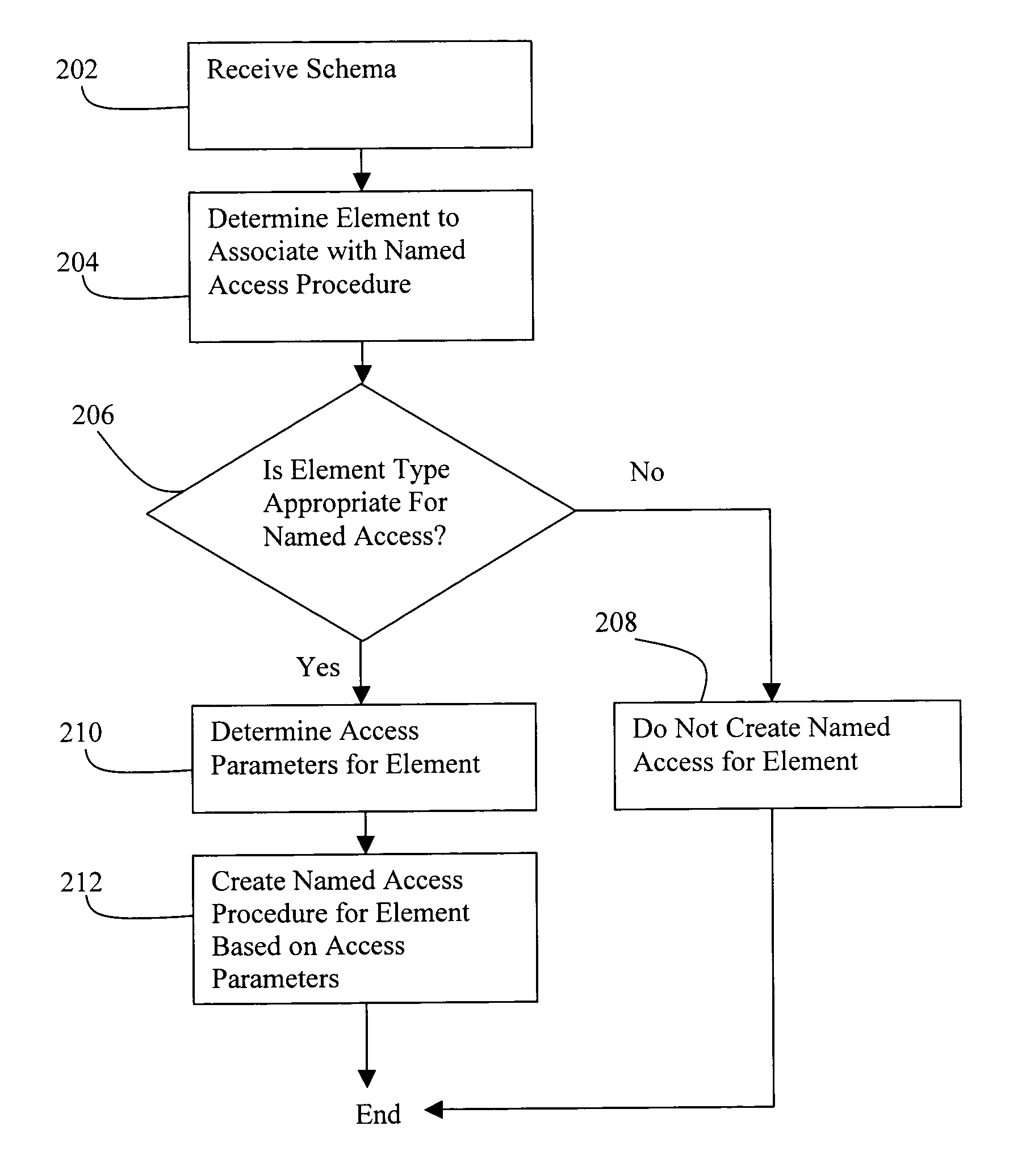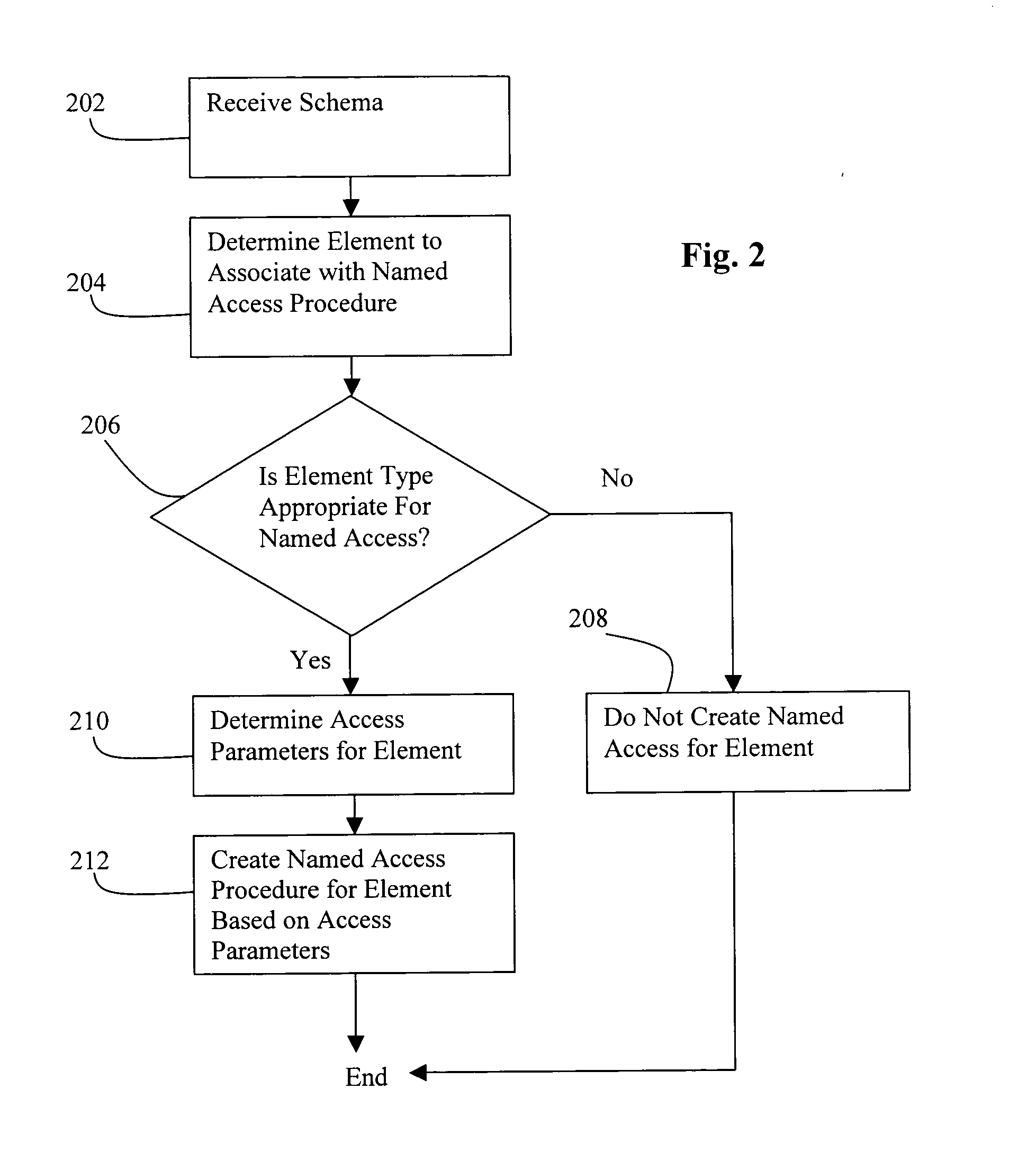Method and mechanism for efficient access to nodes in XML data
a node and data technology, applied in the field of efficient access to xml data, can solve the problems of increasing memory usage, slow traversal, inefficient and time-consuming dom api, etc., and achieves the effect of reducing the need for datatype conversion, storing and retrieving data more efficiently, and improving lazy manifestation
- Summary
- Abstract
- Description
- Claims
- Application Information
AI Technical Summary
Benefits of technology
Problems solved by technology
Method used
Image
Examples
Embodiment Construction
The present invention provides an approach for accessing XML data that solves the problems of the DOM API approach. In one embodiment, in the case of a schema based document, the structure of the XML document is known apriori and this information can be exploited to store and retrieve the data more efficiently. One approach that can be taken is to improve the access performance of schema based documents via bean-style access.
An XML Schema defines the structure of its related XML documents. When an XML document is said to conform to a particular schema, its structure is well known in advance because of the defined schema. According to an embodiment of the invention, knowledge of the schema is used to provide direct access to elements within an XML document. Because the schema is known, access characteristics of a child element, such as its offset position relative to the parent node, can be determined. Therefore, if it is desired to access a particular element within the XML docum...
PUM
 Login to View More
Login to View More Abstract
Description
Claims
Application Information
 Login to View More
Login to View More - R&D
- Intellectual Property
- Life Sciences
- Materials
- Tech Scout
- Unparalleled Data Quality
- Higher Quality Content
- 60% Fewer Hallucinations
Browse by: Latest US Patents, China's latest patents, Technical Efficacy Thesaurus, Application Domain, Technology Topic, Popular Technical Reports.
© 2025 PatSnap. All rights reserved.Legal|Privacy policy|Modern Slavery Act Transparency Statement|Sitemap|About US| Contact US: help@patsnap.com



